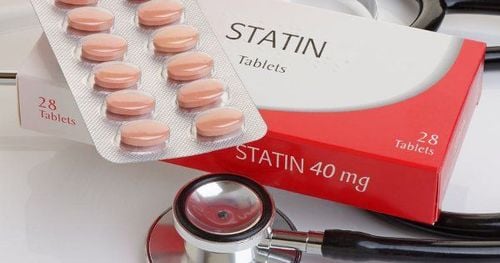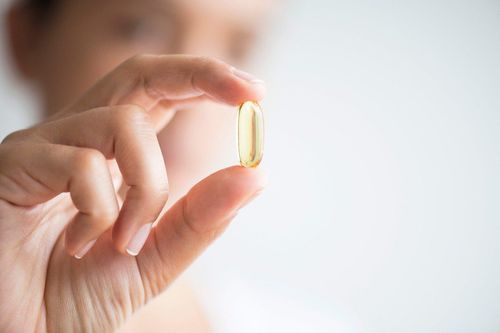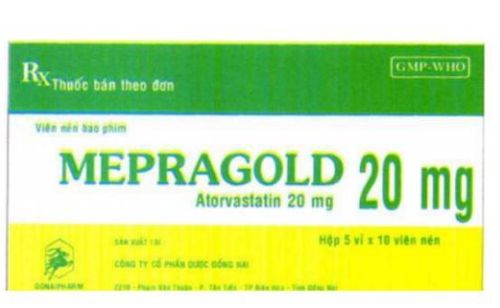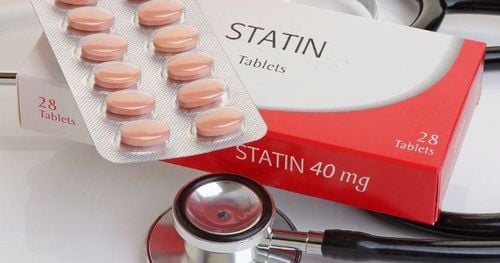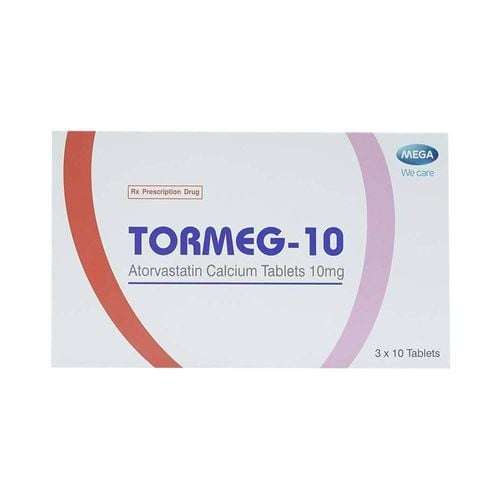This is an automatically translated article.
The cholesterol assessment indicators make it easy to understand what your heart health status is, dangerous or not, so that you can then maintain good health or have a plan to remedy the situation. bad news happens.1. Cholesterol
Blood cholesterol plays a very important role in human health. It helps the function of nerve fiber cell membranes, needed for the production of some hormones such as adrenal hormones, sex hormones...
In the body, cholesterol comes from two sources: from the body produced. to and from food. Cholesterol in the body is produced in the liver 80%. In food, cholesterol is abundant in meat, milk, egg yolks, animal viscera. Thus, cholesterol at a certain level is necessary, the body cannot do without.
In normal people, blood cholesterol content is always constant, only when it is too high will cause a disease, called hypercholesterolemia or hyperlipidemia, this phenomenon causes atherosclerosis, narrowing of blood vessels and blood vessels. is the main cause of cardiovascular disease. People may not be aware of the gradual progression of atherosclerosis in their body.
Classification of cholesterol: bad cholesterol and good cholesterol
Insoluble cholesterol in the blood. Therefore, when cholesterol circulates in the blood, it must be surrounded by a protein coat called lipoprotein. There are two important types of lipoproteins: low-density lipoprotein (LDL) and high-density lipoprotein (HDL).
Cholesterol type LDL carries most of the body's cholesterol. When there is a lot of LDL in the blood, the artery walls will deposit fat causing atherosclerosis, so LDL is called bad cholesterol. In contrast, HDL takes cholesterol out of the blood and prevents it from entering the artery walls, hence the term good cholesterol.
2. What factors affect the cholesterol index?
LDL cholesterol can increase due to factors related to diet, bad habits like smoking, sedentary, or related to diseases such as high blood pressure, diabetes...
The decrease in HDL cholesterol can be caused by smoking, being overweight, obese, etc. Therefore, to increase HDL cholesterol, it is necessary to quit smoking, maintain a reasonable weight, and increase exercise.
.
3. Cholesterol risk of cardiovascular diseases
3.1 Cholesterol Test Indicators Total cholesterol concentration is usually assessed based on:
High density lipoprotein (HDL), or just good cholesterol Low lipoprotein density (LDL), or just cholesterol bad cholesterol Including 20% of triglycerides, this is a type of fat, an element that occurs in the blood. The cholesterol ratio is also known as an estimator of cardiovascular risk. 3.2 What is cholesterol ratio?
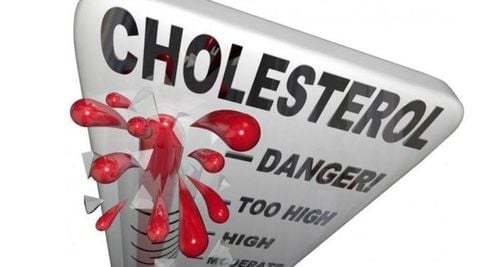
Nồng độ Cholesterol
Understand that this is an estimate of cardiovascular risk, cholesterol ratio will be calculated by dividing the density of total cholesterol by the density of high-density lipoprotein (HDL). This number will help patients understand their cardiovascular health status. According to recommendations from the American Heart Association, each person should only maintain a cholesterol ratio in the body below 5, especially a perfect index of 3.5.
Index - risk for men An average cholesterol ratio of 5 will show that in men there is an increased risk of cardiovascular diseases. This index when reaching the threshold of 9.6 means the risk has doubled compared to normal, and of course, when the index falls to 3.4, the risk of cardiovascular disease has decreased. half.
Indicator - risk for women In women, levels of HDL cholesterol or good cholesterol are usually higher. Many scientific studies have shown that the average cholesterol ratio at 4.4 indicates that women are already at risk of cardiovascular diseases. This risk doubles when the cholesterol ratio reaches 7 and when they drop to 3.3 that risk is halved.
Same total cholesterol, but different cholesterol ratios Even though two individuals test for the same total cholesterol in their blood, it is still possible to reach a cholesterol ratio that predicts disease risks different cardiovascular.
Specifically, a case is as follows: If the total cholesterol index reaches 200, along with the HDL cholesterol index is 60, then the cholesterol ratio in the body will reach 3.3. This number is fortunately close to the ideal index level given by the Heart Association.
However, when your total cholesterol is kept at 200 and your HDL cholesterol is only 35, this number is lower than the ideal number (the ideal HDL ratio for men is 40 and for women). is 50), the cholesterol ratio in your body reaches 5.7 this number is alarming, you are likely to have cardiovascular diseases higher than normal.
Each person's cholesterol ratio Each person needs to remember the cholesterol ratio in their body, it's easier than having to memorize all the ratios of HDL cholesterol, LDL cholesterol, and total cholesterol. . The cholesterol ratio makes it easy to see how your heart health is, dangerous or not.
However, if you see a warning that the amount of bad cholesterol in your body is increasing, the best way is to balance and pay more attention to all the remaining numbers. Pay attention to all the indicators of the body and remember the cholesterol ratio, it will help you have a plan to correct the situation when an alarm occurs, and can maintain good index within the safe threshold.
3.3 Method for optimal cholesterol ratio In order to have an optimal cholesterol ratio, it is necessary to ensure that the assessment of total cholesterol and HDL, that is, including both LDL cholesterol and HDL cholesterol, reaches the optimal value. This is not easy, it requires perseverance in following a healthy lifestyle, healthy diet and proper exercise. The sooner you start living a healthy life, the better the results. Experts advise:
Diet should be maintained:
Eat lots of vegetables and fruits. Eat cereals. Drink fat-free milk. Lean meat, skinless poultry. Fatty (oily) fish, at least twice a week. Unsaturated vegetable oils (olive oil, sunflower oil, soybean oil...). Food should be limited:
Margarine, animal fat, unfiltered animal meat. Full-fat milk (whole cream). Animal viscera. Prepared foods: pate, sausage, salami... Fried food, fast food (including instant noodles). Vegetable oils high in saturated fat: coconut oil, palm oil, almond oil... Reasonable exercise regimen:
Exercise at least 30 minutes a day. Exercise regularly every day of the week. The intensity of the exercise is strong enough, enough to sweat (if you have a medical condition, you should consult your doctor about a specific exercise regimen). Live healthy, quit harmful habits:
Quit smoking: Smoking not only affects the formation of atherosclerosis, but also causes dyslipidemia as well as many other adverse effects.

Hút thuốc ảnh hưởng đến sự hình thành xơ vữa động mạch
Limit alcohol: If you drink alcohol, do not drink much, avoid alcohol abuse. It is best to drink red wine, the amount should not exceed 142 ml per day. Weight loss: Lose weight if overweight/obese, maintain ideal body mass index (BMI) (BMI 19 – 23). Avoid stress: Avoid a sedentary lifestyle, avoid stress Vinmec International General Hospital provides customers with a package of outpatient diabetes management - hyperlipidemia to help patients proactively monitor cholesterol and blood fats. in the body through blood tests, total urinalysis, ..... From there, the doctor will give general conclusions and advice to customers to protect health, adjust a healthy lifestyle strength, reducing the risk of cardiovascular effects.
Please dial HOTLINE for more information or register for an appointment HERE. Download MyVinmec app to make appointments faster and to manage your bookings easily.




